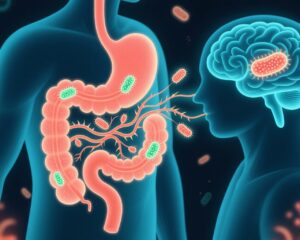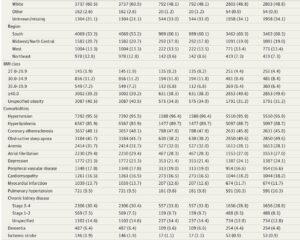Introduction: The Middle-Age Mystery of Expanding Waistlines
As many adults cross the age of 40, a frustrating and common phenomenon often sets in: the gradual, and then sometimes rapid, gain of belly fat — commonly called “midlife weight gain” or the notorious “beer belly.” This change is more than a cosmetic inconvenience. It foreshadows increased risks for metabolic disorders, including insulin resistance and type 2 diabetes. Despite countless gym memberships and dietary efforts, many find it increasingly difficult to shed this extra fat. But why exactly does this happen?
For decades, the prevailing narrative blamed slowing metabolism and reductions in physical activity. However, groundbreaking research published in 2025 in the journal Science reveals a more nuanced biological explanation involving a special subset of fat progenitor cells that suddenly gain the ability to rapidly generate new fat cells during midlife, especially in men.
The Hidden Culprit: Visceral Fat and Its Metabolic Consequences
Not all body fat is created equal. Fat that accumulates beneath the skin (subcutaneous fat) is less harmful than visceral fat, which nests around vital abdominal organs. Midlife adults often notice their expanding waists harbor visceral fat, which correlates strongly with metabolic dysregulation.
The clinical implications are substantial: greater visceral fat is linked to increased insulin resistance, systemic inflammation, and elevated risk of cardiovascular diseases. Unlike peripheral fat, visceral fat actively releases harmful substances that disrupt normal metabolism.
Historically, two mechanisms were considered responsible for increased fat tissue: hypertrophy, where existing fat cells enlarge, and hyperplasia, the formation of new fat cells. It was thought that slowing metabolism (lower basal metabolic rate) partly accounted for fat accumulation during middle age. Yet a pivotal 2021 study by Pontzer et al. demonstrated that from age 20 to 50, humans do not experience significant declines in basal energy expenditure[1].
This contradicts the simple “slow metabolism” explanation and invites deeper investigation into what drives midlife fat expansion.
Breaking the Myth: It’s Not Just Less Exercise
Common wisdom suggests that as people age, they become less physically active, purportedly causing weight gain. But consider the case of many middle-aged men who, as young adults, may not have engaged in structured exercise but performed plenty of physical activity otherwise—chasing after romantic interests or engaging in active lifestyles—yet still undergo midlife weight gain.
Therefore, the root cause is more complex than reduced exercise alone. The search for biological drivers influenced scientists to explore cellular and molecular changes occurring in fat tissue during aging.
The Breakthrough: Fat Progenitor Cells Unlock Their Fat-Making Potential in Midlife
In 2025, Wang et al. published a groundbreaking study in Science detailing how a specific subset of fat progenitor cells (adipocyte progenitor cells, APCs) in mice change dramatically with age[2].
APCs are a type of stem cell within fat tissue that gives rise to new fat cells. While most stem cells usually diminish in number and function with age, these fat progenitor cells defy this trend. At middle age — approximately equivalent to 45 human years — male mice’s visceral fat undergoes explosive growth driven by an unprecedented surge in APC activity, particularly in a unique subtype called CP-A cells.
Key findings include:
– Male mice at 12 months old (human midlife equivalent) had white adipose tissue masses approximately 4.6 times heavier than younger mice.
– Approximately 80% of newly formed fat cells were recent recruits, indicating heightened adipogenesis rather than fat cell enlargement alone.
– Female mice exhibited much less visceral fat gain, underscoring a striking sex difference.
– Middle-aged male mice showed reduced energy expenditure and increased insulin resistance, mirroring human metabolic changes at midlife.
The Role of CP-A Cells: The “Fat Factories” Driving Midlife Fat Accumulation
Using advanced single-cell sequencing, researchers identified CP-A cells marked by the leukemia inhibitory factor receptor (LIFR). These cells begin appearing around 9 months, peak at midlife (12 months), then decline with older age.
CP-A cells possess remarkable adipogenic capabilities; they proliferate and differentiate faster and more efficiently than other APCs from younger animals. Experimental transplantation of CP-A rich cells into young mice triggered premature fat accumulation, effectively recreating a midlife fat gain phenotype.
Furthermore, CP-A cells were predominantly found in the visceral fat of male mice, explaining the male predilection for midlife visceral fat accumulation.
Targeting the Problem: LIFR Signaling and Therapeutic Hope
LIFR is not only a marker but is functionally critical. It triggers the STAT3 signaling pathway, which regulates gene expression linked to cell proliferation and differentiation.
Excitingly, researchers tested a drug called EC359 that specifically inhibits LIFR. In middle-aged mice, EC359 dramatically suppressed CP-A cell adipogenesis, halving the number of new fat cells and reducing belly fat mass.
Notably, EC359 did not affect other adipocyte progenitors, demonstrating a precise targeted effect on the CP-A subset. This specificity suggests a promising therapeutic avenue for midlife visceral fat reduction.
Clinical Implications: What This Means for Humans
Although the bulk of this research was conducted in mice, similar CP-A-like cells were found in visceral fat samples from human males, with their fat-producing behavior similarly dependent on LIFR signaling.
This implies that men’s midlife belly fat accumulation is at least partly driven by this cellular mechanism, not simply by lifestyle factors or diminishing metabolism.
Dispelling Misconceptions and Practical Takeaways
| Common Misconceptions | Scientific Reality |
|——————————-|————————————————————|
| Midlife weight gain is mainly due to less exercise. | While physical activity matters, intrinsic cellular changes in fat tissue play a key role. |
| Slowing metabolism causes belly fat gain at midlife. | Basal metabolic rate remains stable from ages 20-50, so this is unlikely the main cause. |
| Increasing exercise alone is enough to lose visceral fat. | Exercise helps but may not fully counteract CP-A cell-driven fat accumulation. |
Despite the new knowledge, adopting a healthy lifestyle remains critical. Regular exercise, balanced diet, and weight management contribute to overall health and may mitigate adverse metabolic effects.
Gender Differences: Women and Midlife Weight Gain
Women also experience midlife weight gain, but the mechanisms likely differ. Hormonal fluctuations—especially around menopause—affect fat distribution and accumulation. Unlike the CP-A cell surge identified in males, female fat gain is more closely related to hormonal changes and their effects on fat metabolism.
Expert Insights and Future Directions
Dr. Gina Wang, lead author of the 2025 Science study, notes: “Our discovery of CP-A cells represents a paradigm shift in understanding midlife weight gain, particularly in men. Targeting LIFR signaling could herald a new class of therapies addressing metabolic health beyond the traditional diet and exercise approach.”
Experts emphasize that, while pharmacological interventions may become available, they will likely complement rather than replace lifestyle modifications.
Patient Scenario: John’s Journey Through Midlife Weight Gain
John, a 46-year-old software engineer, notices his waistline expanding despite consistent gym visits and a reasonably healthy diet. Frustrated and concerned about his family history of diabetes, he consults his physician. After understanding the biological changes in fat progenitor cells and how they affect midlife fat gain, John adopts a comprehensive approach: consistent exercise, dietary adjustments, and stays informed about emerging treatments targeting fat tissue biology. This holistic strategy helps manage his health proactively.
Conclusion
Midlife weight gain, especially visceral fat accumulation, is driven by complex biological mechanisms rather than solely decreased physical activity or metabolism. The identification of CP-A adipose progenitor cells and their role in midlife fat generation unveils new paths for treatment.
Rather than blaming metabolism or exercise alone, understanding these cellular processes offers hope for targeted therapies that can mitigate metabolic risk. Meanwhile, maintaining an active lifestyle and balanced nutrition continues to be foundational for health.
As midlife is not a metabolic dead end but an opportunity for informed intervention, ongoing research promises improved strategies to tackle midlife weight gain effectively.
References
1. Pontzer, H., et al., Daily energy expenditure through the human life course. Science, 2021. 373(6556): 808-812.
2. Wang, G., et al., Distinct adipose progenitor cells emerging with age drive active adipogenesis. Science, 2025. 388(6745): eadj0430.



